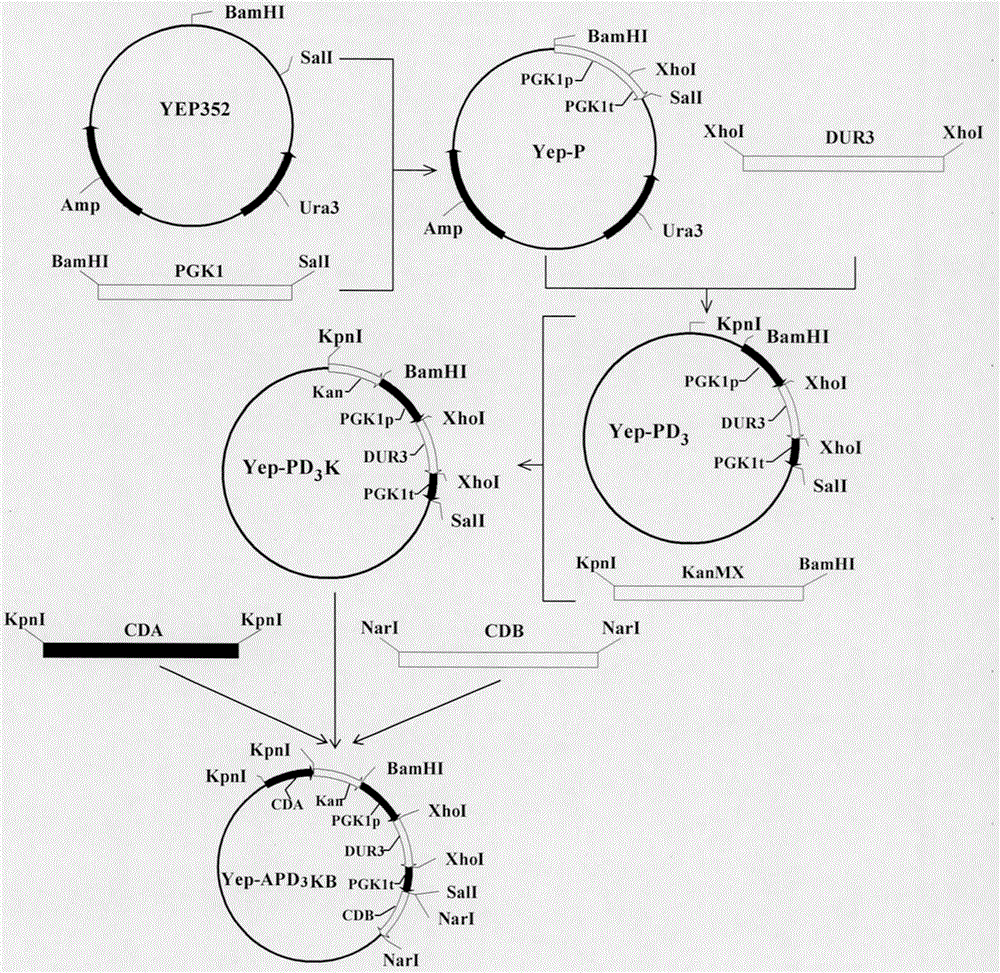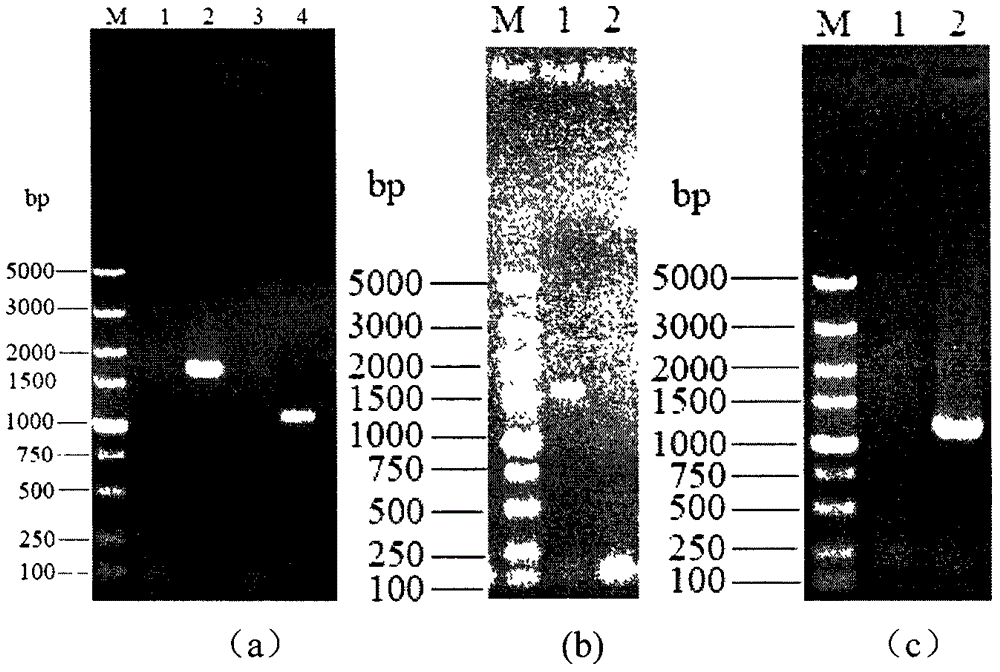Ethyl carbamate (EC) low-yield saccharomyces cerevisiae strain obtained by knocking-out CAR1 and over-expressing DUR3 and construction method of saccharomyces cerevisiae strain
The technology of urethane and Saccharomyces cerevisiae strain is applied in the field of bioengineering, and can solve the problems of reduced urease activity, high production cost, cumbersome production process of urease, etc., and achieves the effects of increased expression, broad market prospects and wide application prospects.
- Summary
- Abstract
- Description
- Claims
- Application Information
AI Technical Summary
Problems solved by technology
Method used
Image
Examples
Embodiment 1
[0035] Example 1: Construction of Saccharomyces cerevisiae with low production of urethane
[0036] The starting strain CGMCC No.3373 used in this example. The Escherichia coli DH5a was purchased from Takara Company. The YEPD medium is a general complete medium, and the solid medium contains 2% imported agar powder.
[0037] Based on the yeast genome data in Genebank and the integrated plasmid sequence, the following primers were designed.
[0038] The primers used in the present embodiment of table 1
[0039]
[0040] Note: The underlined part is the restriction site.
[0041] The PCR amplification system used in the present embodiment of table 2
[0042]
[0043] Table 3(a) Solution I ligase ligation method
[0044]
[0045] Note: The reaction conditions are 16°C water bath, overnight connection
[0046] Table 3(b) Infusion ligase ligation method
[0047]
[0048] Note: The reaction conditions are 50°C water bath, connecting for 30min
[0049] (1) Recombi...
Embodiment 2
[0062] Embodiment 2: Fermentation experiment of low-yield EC Saccharomyces cerevisiae strain
[0063] (1) Wine fermentation experiments of recombinant strains and starting strains
[0064] The recombinant strain and the original strain were subjected to wine fermentation experiments at the same time, and the fermentation process roadmap:
[0065] Grape raw materials→cleaning, drying, destemming→crushing→sugar adjustment, acid adjustment→adding sulfurous acid, sterilization→inoculation→pre-fermentation→skin separation→post-fermentation→measurement index
[0066] Process conditions:
[0067] Brix: 20.45Brix; Acidity: pH 3.51; SO 2 Addition amount: 80mg / L; inoculation amount: 3%; pre-fermentation temperature and time: 25°C, 4.5d; post-fermentation temperature and time: 20°C, 9d.
[0068] Pick a ring of yeast cells, put them into a test tube containing 5mL of YEPD medium, culture at 30°C, 180rpm for 12h, then inoculate 10% of the inoculum into a 150mL Erlenmeyer flask containin...
PUM
 Login to View More
Login to View More Abstract
Description
Claims
Application Information
 Login to View More
Login to View More - R&D
- Intellectual Property
- Life Sciences
- Materials
- Tech Scout
- Unparalleled Data Quality
- Higher Quality Content
- 60% Fewer Hallucinations
Browse by: Latest US Patents, China's latest patents, Technical Efficacy Thesaurus, Application Domain, Technology Topic, Popular Technical Reports.
© 2025 PatSnap. All rights reserved.Legal|Privacy policy|Modern Slavery Act Transparency Statement|Sitemap|About US| Contact US: help@patsnap.com



